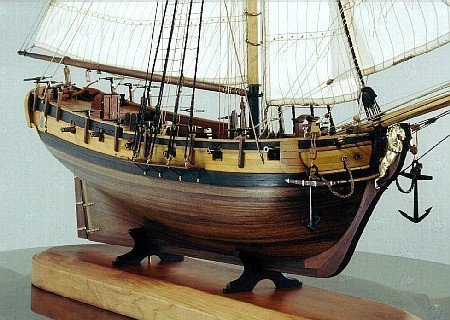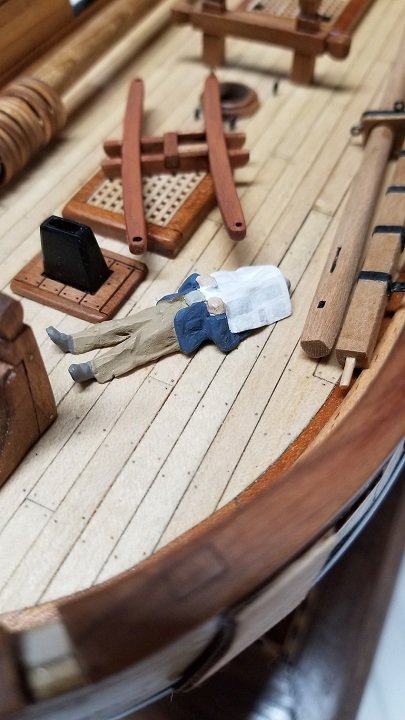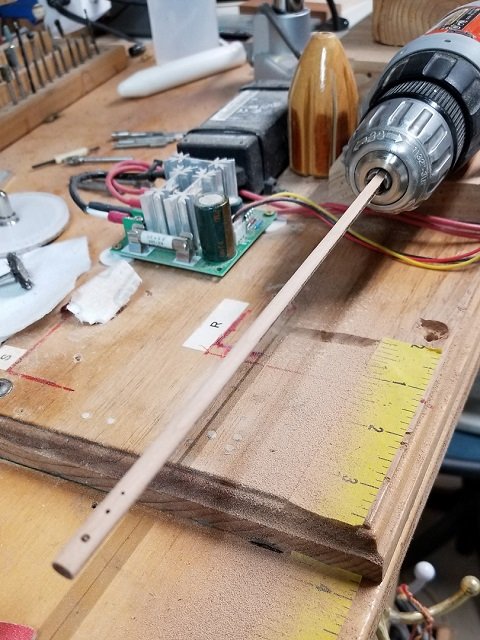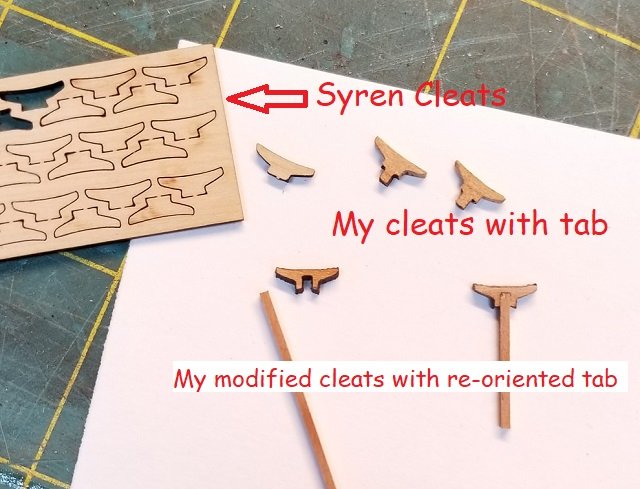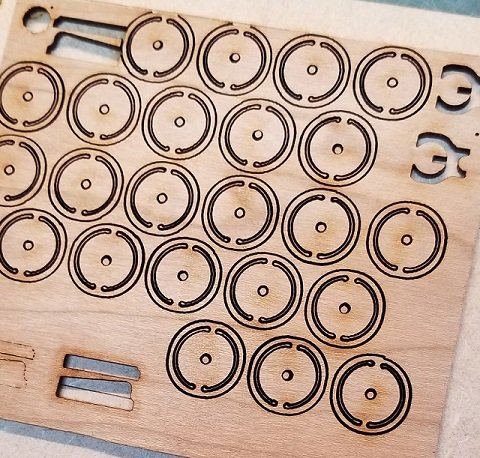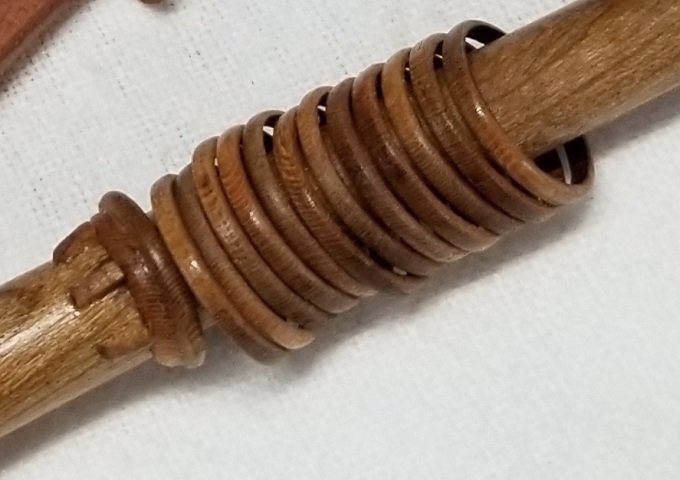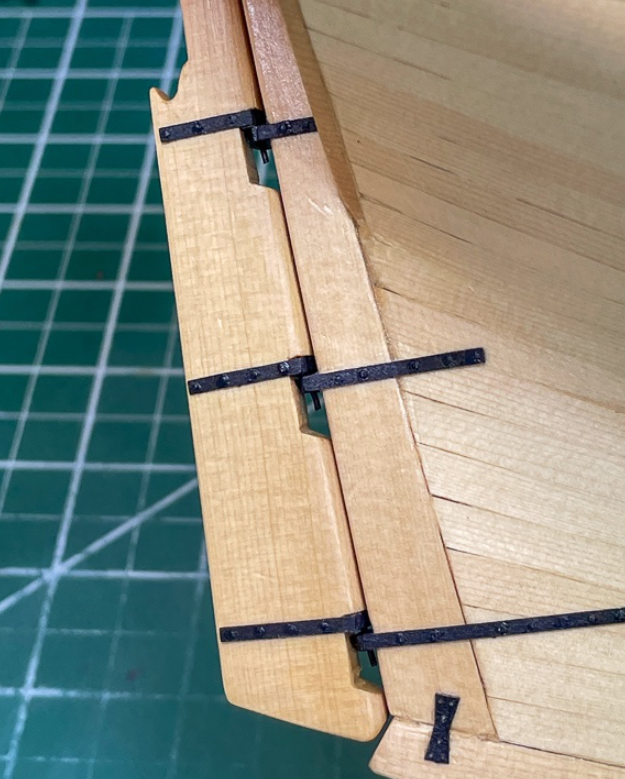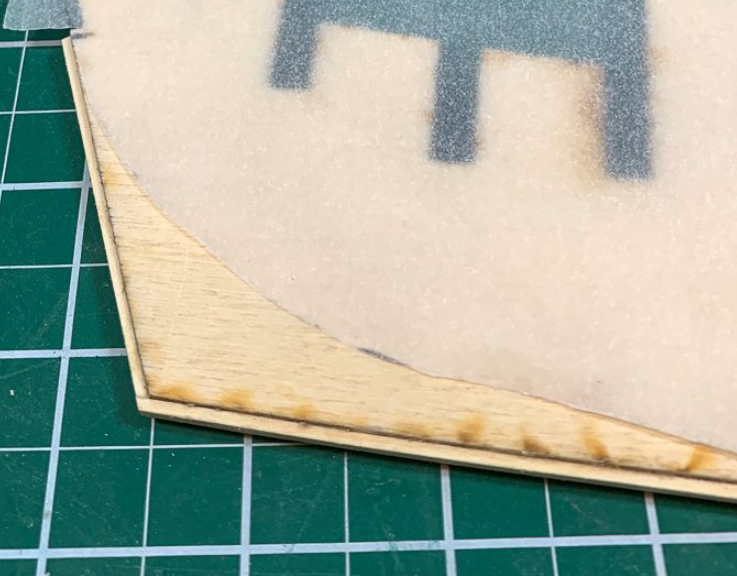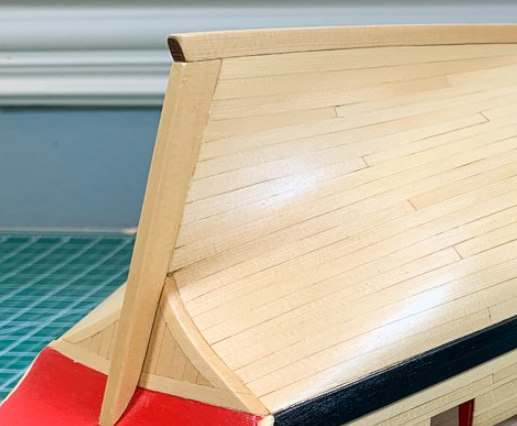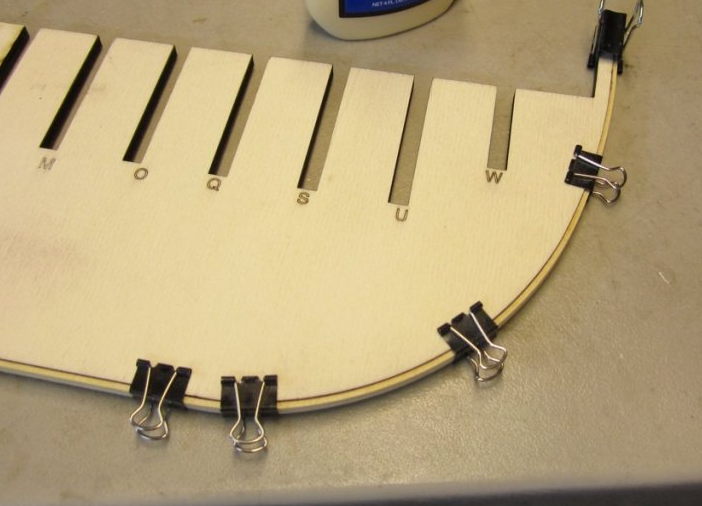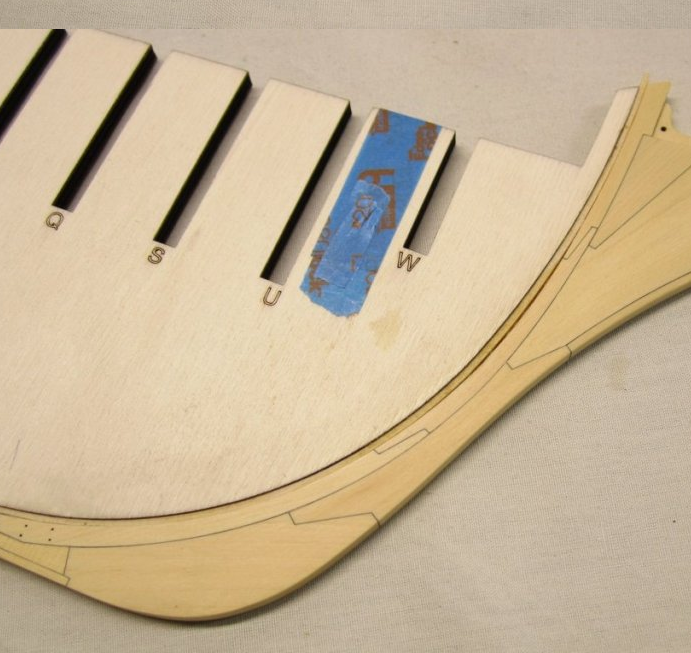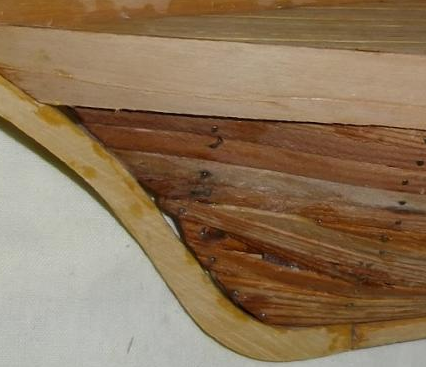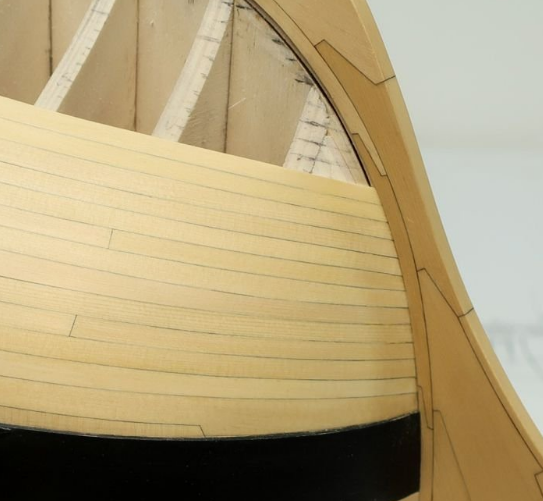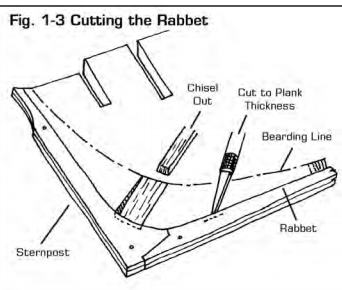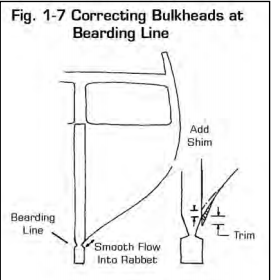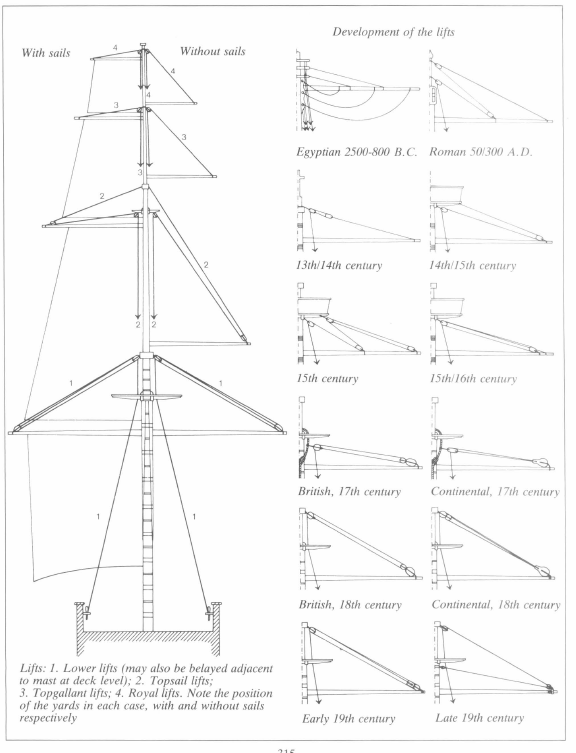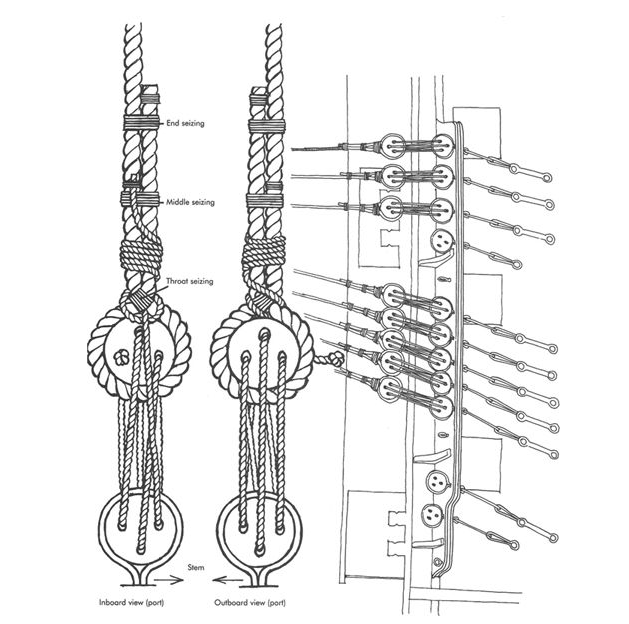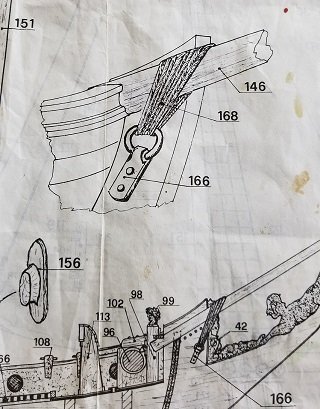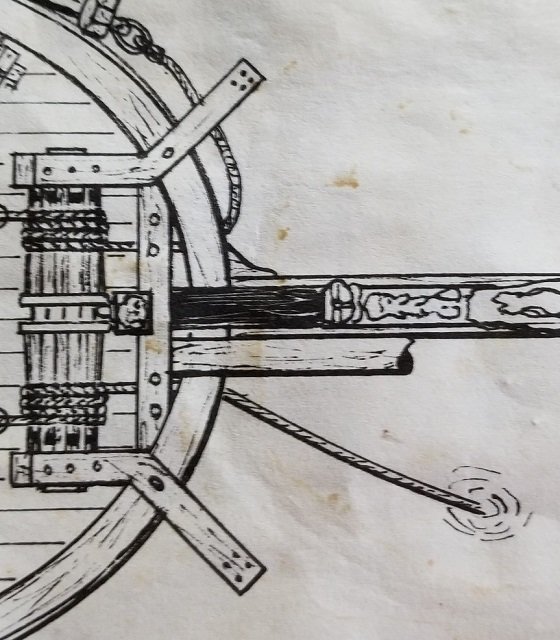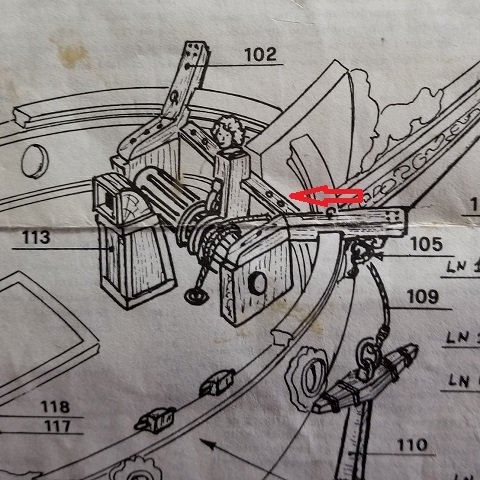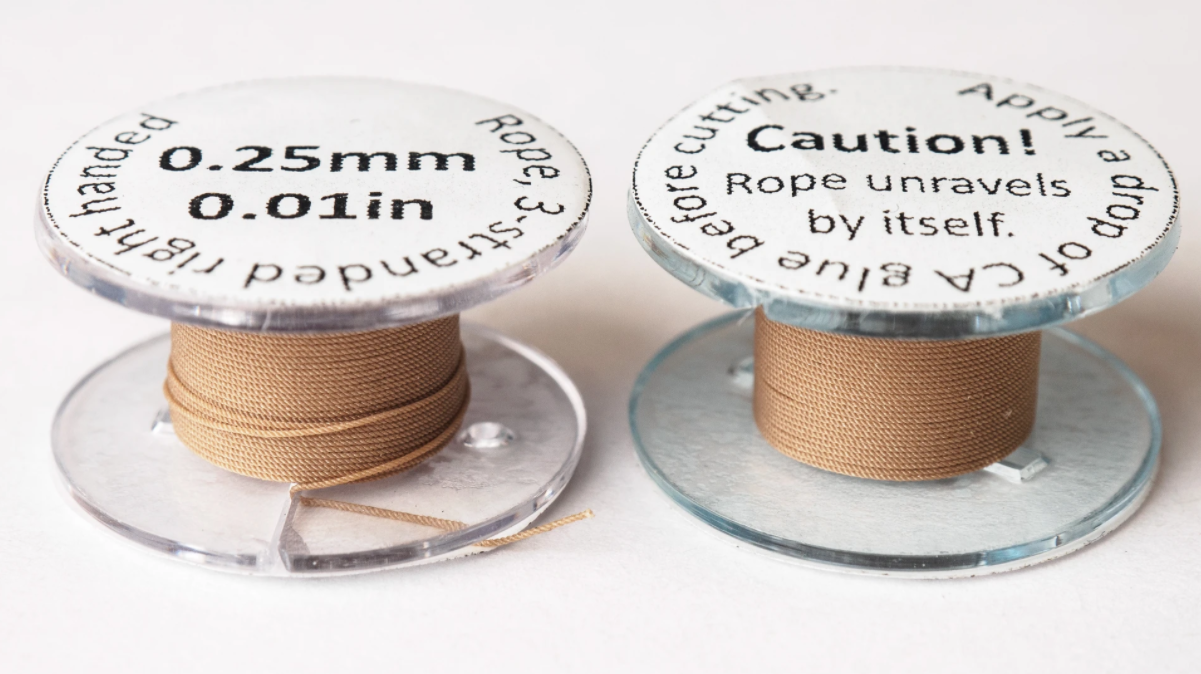-
Posts
2,715 -
Joined
-
Last visited
Content Type
Profiles
Forums
Gallery
Events
Everything posted by Gregory
-
Getting 1/32 milled pear, apple or boxwood would be a challenge. I suspect the pricing would be interesting as well. Those would certainly be my first choice if they could be had, and if I wasn't going to paint or stain it. I'm thinking Moab is wanting to get something to work with in the near future.. I hope that when someone finds a good source for any of those, they will let us know right away..
-
Contrary to some rumors, I have not been sleeping on the job. I have been working on the masting and some other odds and ends, as well as some non modeling projects that have been taking me away from this one. A little of my technique and results follow I refer to my laser a lot, and here I chose to take care of the initial tapering of the topmast by cutting it with the laser. If the plans look familiar, I'm taking some ideas from my Cheerful plans. I follow up with my Black & Decker unimat, which also drives my disk sander and ropewalk. A couple of other things before I show the almost-finished mainmast/topmast assembly. I have some nice Syren cleats that are the right size, but I wanted to stay with cherry as my main wood of choice for fittings on this build. I cut them out, but found the little mounting pegs broke off too easily because of the grain orientation, so I made a modification that makes for a strong mounting peg. The joint will not be very noticeable when rope is in place. Next up, some mast hoops that will need to go on the mast before it is assembled. I made these from cherry, with a method that Chuck demonstrated with Cheerful. I spin them and finish them on the rotary tool. Who wants to guess how many of these I started with to get the few that ended up on the mast? I like the way the cherry looks.. ( No, I did not hide any breaks on the hidden side of the mast ..😁 ) I need to take a break tonight, but I will have a few more pictures of mast details tomorrow ..
-
I would recommend Ocooch Hardwoods as a source. Their prices are very reasonable. They ship very quickly and they communicate very well. They don't list 1/32 on their site, but it is my understanding they will cut it for you if you send them an email. Keep in mind, tight grain might mean they are more difficult to stain. My choices would be cherry, maple, beech, ash and poplar, not necessarily in any order. You may get some more informed and educated opinions than mine..
-
Royal Caroline rigging lines & blocks
Gregory replied to rvmer2's topic in Masting, rigging and sails
What is the basis of your model? Kit ? Scratch build? The only legitimate kit is the one from Panart; perhaps someone here could give you a block count from the plans. However, I would not rely on it for being accurate. The rigging lines are another matter. The kit will not have a list of the " number of lines " .. I see in another post that you have the AOTS book. That would be the best source for determining the type and number of blocks, as well as the size and amount of rigging line you need. -
No trial and error.. It stays the same from front to back Using the rabbet strip, at the stern, the bearding line is made flush with the rabbet strip.. ( GBarlow's Cheerful ) At this point, very little, if any of the thickness of the planks has been removed.. At most a small amount of beveling on some edges. ( Thanks to Glenn for providing a lot of detail in his build log.. )
-
I guess a lot of our members feel that it is complicated, because we get a lot of questions about these things.. That is why we depend on the more experienced members like yourself, to give us ideas that have worked for us.. AL might have a good method but they do not give detailed instructions that would provide a nice looking outcome.. Rabbet and bearding line do not seem to be part of their vocabulary, but are essential to well finished planking on ship models.
-
Do you plan on offering the gun carriage jig in the store like you did for the grating jig?
- 1,784 replies
-
- winchelsea
- Syren Ship Model Company
-
(and 1 more)
Tagged with:
-
If you want to try something just use the Dremel mandrel and cut out your own with some kind of rubber backing.. I don't think you will find anything ready made that is very robust..
-
Here is something that works really well for most kits, and should work in your last example, with a back-bone type keel, where you add the separate keel, and stern post: You add a 1/16 ( smaller or bigger depending on the size of the model ) square strip along the center of the piece. As seen here on Chuck's Winchelsea. This serves as a groove in which to fit your planks, and serves the same purpose as the rabbet.. It only adds a fraction to the dimensions of your model and should not cause any problems, while making the fitting of the planks easier and better looking.. So, instead of something like this: You get something like: This! Gregory
-
On the models where the planks appear to fit flush there is a sort of groove called the rabbet, and the edges of the planks are inserted into this groove. At the stern , there is a recessed area called the bearding line, where the framing is recessed to be less than the thickness of the sternpost and keel so that the planks are flush with the sternpost and keel. Most kits don't provide this detail, and you have to add it as you go along. At this point it would be difficult to add to your model. In the future you will need to access some of the planking guides here at MSW.. Here is a simplified illustration of the bearding line and rabbet..
-
If it comes loose it is because there wasn't a strong bond to begin with. A good bond with CA depends on both surfaces being rough or porous. If either surface has paint or varnish that is smooth, it will not bond well, except to the paint or varnish, and will separate easily taking the paint or varnish off with it. 1. A good CA bond should last many 10's of years if not indefinitely. It forms a layer that is essentially plastic between the two surfaces. 2. You could have used epoxy, it tends to adhere to non-porous surfaces better than CA. However, if used on finished surfaces, it can break apart, taking the finish with it. The pieces may have been fastened with hidden nails or pegs.
-
HMS Bounty by AdamA - 1:48
Gregory replied to AdamA's topic in - Build logs for subjects built 1751 - 1800
I hope you will excuse me to ask a question, but are the drawings for your stem pieces from the Hahn drawings? I am curious as to piece number one and the gammoning slot. It seems that the long horizontal joint would have been a weak point considering the forces present from the gammoning. I have seen a similar configuration on another Hahn design for Rattlesnake.. I am certainly no expert, but other plans I have seen would have the gammoning slot in a piece that extended deeper vertically into the stem. Perhaps someone with more knowledge than me could shed more light on this. -
Choosing the best kit. The Mantua Panart or the Caldercraft.
Gregory replied to Roy Harran's topic in Wood ship model kits
There is a reason it's so expensive.. The cheaper kits require you to be more innovative.. Consider your own skill set.. You might wait for the new 1:64 Amati Probably more than Caldercraft, but then, maybe Caldercraft will go down.. -
Note: Keep in mind that Monfeld shows one side without sails, in which case, the yards are lower on the masts.. Here is a nice model at NMM showing the topsails lowered. Speedwell Another note, is that topgalant sails were often " set flying ". The yards were not present when no sails were rigged. They were rigged on the deck, and hoisted ( set flying ) when required... For modeling purposes, I think the yards without sails are often shown in a raised position, with the topgallant yards as well.
-
Here is an example from Mondfeld: You can rig your Bounty with these drawings and feel you are doing it right.. If you are not going to include sails, you might consider leaving some lines off, such as clews, leech and bow lines.. Again it is up to you.
-
Does Amati name the ropes, i.e., main topsail lift ? If they don't, using any good book that does, is way ahead of them.. For instance, Peterson will show you the main topsail lift and exactly how to run it and what the blocks and siezings should look like. It would serve the same purpose whether it is the Bounty or the Victory. If Amati is showing something different, I wouldn't waste time trying to follow their instructions. other than a rough starting point. Of course, you must proceed with what you are comfortable with, and I am sure you are learning a lot as you go along..
-
One more book to think about later; Rigging Period Ship Models: This book has received some criticism because of perceived errors, but it is based on what the author observed on a contemporary model, and the model may have had an error or two. It is a great resource that shows how every line ran on a ship including the belaying point. Even though it would not be a point for point match for Bounty, one could easily extrapolate for a reasonably accurate match.. Here is an example of the drawings in the book: The author draws every rope on the model one at a time, showing exactly how it runs, with blocks, hooks and everything.
-
The AOTS book is good to have, but the rigging diagrams are relatively small and not easy to sort out.. If i were going to recommend a book that covers rigging in the spirit that Roger speaks of it would be this: Historic Ship Models by Mondfeld. He goes into detail about each line and how it is used.. This would have always been the same across various ships, as Roger pointed out.
-
Dutch yacht by henry x - RESTORATION
Gregory replied to henry x's topic in - Build logs for subjects built 1501 - 1750
This is your log.. Post whatever you like! 🙂 -
Dutch yacht by henry x - RESTORATION
Gregory replied to henry x's topic in - Build logs for subjects built 1501 - 1750
Looking really good! Here are some pictures from the Mary plans, showing how the bowsprit is set up.. The end is stepped under the fife rail in front of the windless.. Might give you some ideas for setting yours up.. -
Dying/coloring rope; sources for purchase of quality rope
Gregory replied to Tomculb's topic in Masting, rigging and sails
The problem with dyeing/coloring, synthetics don't take color very well, and naturals; cotton, linen, etc. may not hold up well over time, with coloring. If coffee didn't work, it sounds like you are dealing with synthetic. One of our sponsors, CraftySailor has some that looks good in the pictures.. Not sure how competitive they are, But I have had real good experience buying other products from them.. And don't forget: Making your own rope
About us
Modelshipworld - Advancing Ship Modeling through Research
SSL Secured
Your security is important for us so this Website is SSL-Secured
NRG Mailing Address
Nautical Research Guild
237 South Lincoln Street
Westmont IL, 60559-1917
Model Ship World ® and the MSW logo are Registered Trademarks, and belong to the Nautical Research Guild (United States Patent and Trademark Office: No. 6,929,264 & No. 6,929,274, registered Dec. 20, 2022)
Helpful Links
About the NRG
If you enjoy building ship models that are historically accurate as well as beautiful, then The Nautical Research Guild (NRG) is just right for you.
The Guild is a non-profit educational organization whose mission is to “Advance Ship Modeling Through Research”. We provide support to our members in their efforts to raise the quality of their model ships.
The Nautical Research Guild has published our world-renowned quarterly magazine, The Nautical Research Journal, since 1955. The pages of the Journal are full of articles by accomplished ship modelers who show you how they create those exquisite details on their models, and by maritime historians who show you the correct details to build. The Journal is available in both print and digital editions. Go to the NRG web site (www.thenrg.org) to download a complimentary digital copy of the Journal. The NRG also publishes plan sets, books and compilations of back issues of the Journal and the former Ships in Scale and Model Ship Builder magazines.

